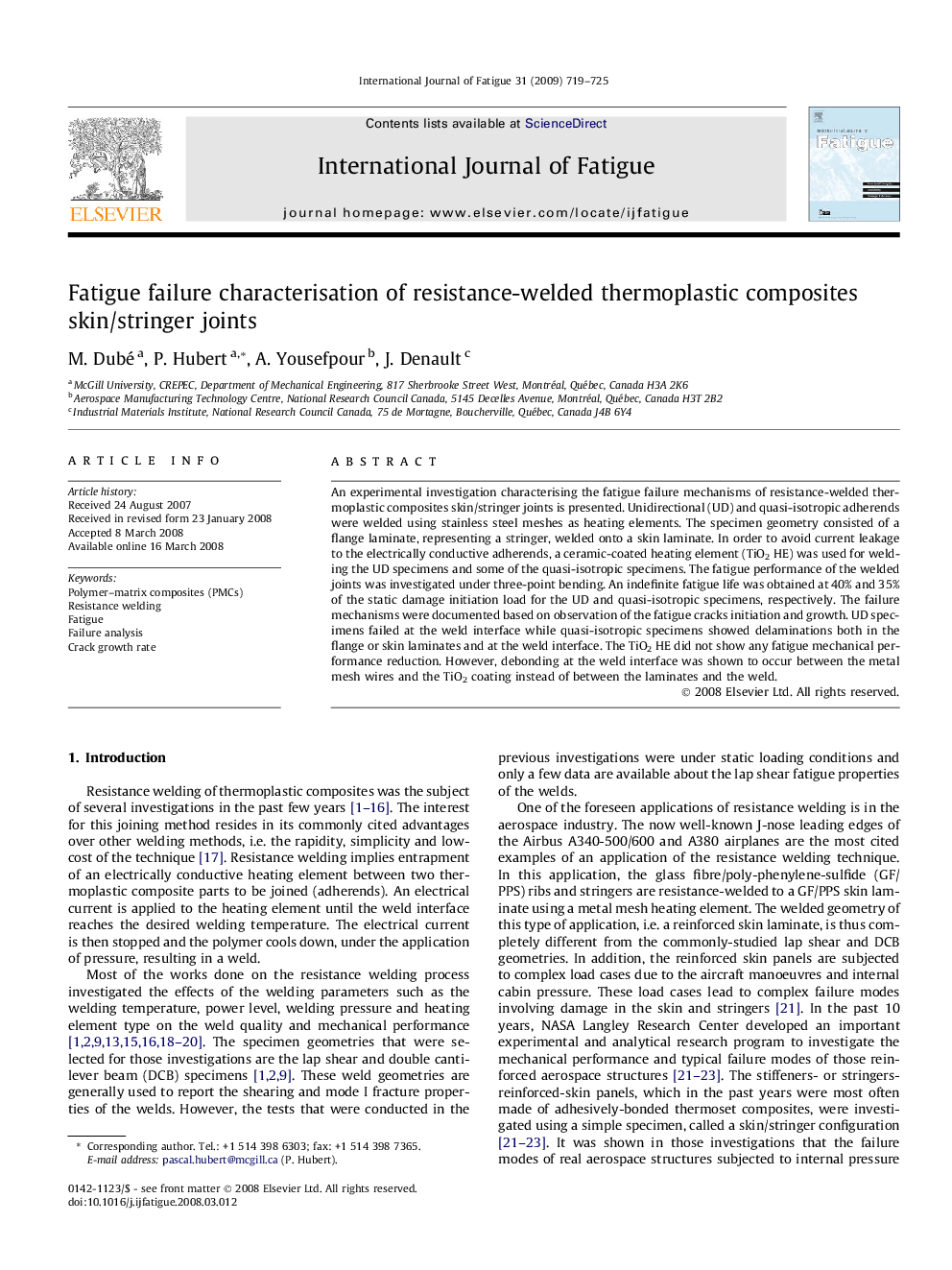| Article ID | Journal | Published Year | Pages | File Type |
|---|---|---|---|---|
| 781565 | International Journal of Fatigue | 2009 | 7 Pages |
An experimental investigation characterising the fatigue failure mechanisms of resistance-welded thermoplastic composites skin/stringer joints is presented. Unidirectional (UD) and quasi-isotropic adherends were welded using stainless steel meshes as heating elements. The specimen geometry consisted of a flange laminate, representing a stringer, welded onto a skin laminate. In order to avoid current leakage to the electrically conductive adherends, a ceramic-coated heating element (TiO2 HE) was used for welding the UD specimens and some of the quasi-isotropic specimens. The fatigue performance of the welded joints was investigated under three-point bending. An indefinite fatigue life was obtained at 40% and 35% of the static damage initiation load for the UD and quasi-isotropic specimens, respectively. The failure mechanisms were documented based on observation of the fatigue cracks initiation and growth. UD specimens failed at the weld interface while quasi-isotropic specimens showed delaminations both in the flange or skin laminates and at the weld interface. The TiO2 HE did not show any fatigue mechanical performance reduction. However, debonding at the weld interface was shown to occur between the metal mesh wires and the TiO2 coating instead of between the laminates and the weld.
